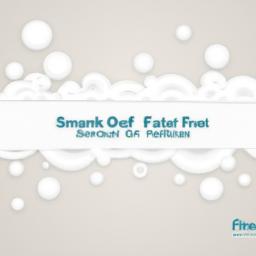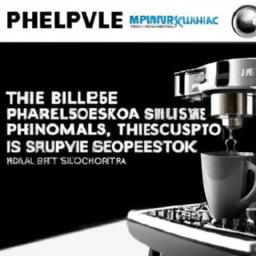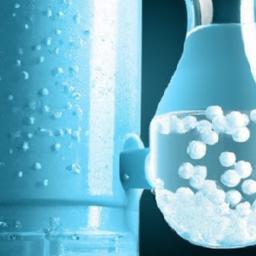The Essential Guide to Froth and Steamed Milk: Elevate Your Coffee Experience
Milk in coffee is more than just an ingredient; it’s a game-changer that influences every sip. Whether it’s thick and velvety or light and airy, milk can completely transform the character of your favorite beverage. Yet, the terms froth and steamed milk often confuse even the most dedicated coffee lovers. Are they interchangeable? Does one enhance cappuccinos more than lattes? We’re here to unravel these questions and help you master milk preparation like a true barista.
Distinguishing Froth from Steamed Milk: Texture, Temperature, and Purpose
At a glance, froth and steamed milk may appear similar, but their differences lie deep in texture, preparation, and role in your drink. Froth is the airy, bubbly crown that graces cappuccinos and macchiatos, created by infusing cold milk with a significant volume of tiny air bubbles, resulting in a light, fluffy foam that can hold latte art momentarily.
Steamed milk, by contrast, is heated gently without incorporating much air, creating a creamy, smooth, and warm liquid that mixes harmoniously with espresso. It’s the foundation of lattes and flat whites, providing a velvety mouthfeel and balancing espresso’s boldness.
| Characteristic | Froth | Steamed Milk |
|---|---|---|
| Texture | Light, airy, bubbly foam | Smooth, creamy, and silky |
| Temperature | Warm, generally cooler than steamed milk (~130-140°F / 54-60°C) | Hot, optimal for blending (~140-160°F / 60-71°C) |
| Role in Coffee | Creates foam topper and texture contrast | Forms the liquid base and balances flavor |
| Air Content | High, with many tiny bubbles | Minimal air, smooth microfoam |
Understanding these differences allows you to select the perfect milk treatment for your brew, whether it’s the frothy cap of a cappuccino or the creamy warmth in a latte.
Temperature’s Critical Influence on Milk Flavor and Texture
Temperature influences both the texture and taste profile of milk in coffee remarkably. Gently heating milk to roughly 140-150°F (60-65°C) enhances its natural sweetness by activating lactose breakdown, enriching the flavor while preserving a smooth mouthfeel.
Exceeding 160°F (70°C) risks imparting scorched, bitter notes, which detract from the drink’s overall quality. Froth typically stays slightly cooler to maintain bubble integrity and avoid flattening the foam, while steamed milk is heated higher to create that dense, velvety microfoam coveted by baristas.
| Milk Temperature | Flavor Notes | Milk Texture |
|---|---|---|
| Below 140°F (60°C) | Sweet, mellow | Silky, dense foam |
| 140-150°F (60-65°C) | Balanced, rich | Smooth steamed milk with microfoam |
| Over 160°F (70°C) | Burnt, bitter | Thin or no foam; unpleasant mouthfeel |
To perfect your craft, monitoring temperature with a digital thermometer or a smart frother ensures every cup delivers the ideal sweetness and texture. With coffee trends in 2024 showing a surge in home espresso machine sales by over 30%, mastering temperature control at home has never been more rewarding.
Essential Equipment for Crafting Froth and Steamed Milk Like a Pro
Gourmet-quality milk steaming and frothing require the right set of tools. Attempting to create silky steamed milk or voluminous froth without adequate equipment can be frustrating and disappointing.
- Milk Frother: Available in manual hand-pump models or electric cordless versions, these devices inject air efficiently to produce luscious froth in seconds.
- Steam Wand: Integrated into espresso machines, the steam wand is the gold standard for heating and texturizing milk. It infuses steam to create microfoam with consistent temperature control.
- Milk Pitcher: A stainless steel pitcher with a sharp spout is indispensable for controlling the milk texture and pouring precision, especially for latte art.
- Digital Thermometer: Ensures milk is heated within the optimal range, crucial for maximizing flavor and texture without scalding.
- Steam Wand Cleaning Tool: Maintaining cleanliness of the steam wand is vital to prevent bacterial buildup and to keep milk flavor pure.
| Tool | Function | Insider Tip |
|---|---|---|
| Milk Frother | Generates airy milk foam | Manual frothers offer greater control over foam density |
| Steam Wand | Heats and textures milk into microfoam | Keep wand tip just beneath the milk surface for optimal foam |
| Milk Pitcher | Aids in frothing and precise pouring | A narrow spout facilitates latte art creation |
| Digital Thermometer | Monitors milk temperature accurately | Clip-on models free your hands during steaming |
| Cleaning Brush | Maintains steam wand hygiene | Clean promptly after use to avoid residue buildup |
No steam wand? Don’t worry – frothing by shaking milk in a sealed jar or whisking vigorously after gentle heating on the stove are excellent low-tech alternatives that still yield pleasant results.
The Importance of Texture: How Milk’s Feel Influences Your Coffee
Texture is the unsung hero in coffee enjoyment. It influences how the flavors unfold and how the drink overall is perceived on the palate. Froth and steamed milk lend distinctly different tactile experiences.
Consider a latte’s luxurious silkiness, wrapping your tongue in a creamy embrace, versus a cappuccino’s buoyant foam that adds lightness and a playful mouthfeel.
| Milk Texture | Sensory Feel | Ideal For |
|---|---|---|
| Steamed Milk | Velvety, creamy, warm | Lattes, flat whites, and creamy desserts |
| Frothy Milk | Light, airy, bubbly | Cappuccinos, macchiatos, and layered coffee drinks |
Texture affects how the coffee’s bitterness and acidity are perceived; fats in steamed milk mellow sharp edginess while froth introduces airiness, making drinks feel lighter.
Which Coffee Drinks Shine with Froth or Steamed Milk?
Many coffee preparations owe their character to the type of milk used. Certain drinks thrive on the fluffy nature of froth, while others depend on the luxuriousness of steamed milk.
Beverages Suited to Frothy Milk
- Cappuccino: This classic Italian favorite demands a thick, resilient foam layer that boosts aroma and texture.
- Macchiato: Espresso crowned with just a touch of froth, giving a delicate contrast in every sip.
- Mocha: The playful interplay between chocolate and espresso comes alive with a light frothy top.
Beverages Best Paired with Steamed Milk
- Latte: Espresso mixed seamlessly with lush steamed milk and a whisper of froth, resulting in a mellow and comforting cup.
- Flat White: Features steamed milk with an ultra-thin layer of microfoam, offering a smooth yet robust texture.
- Chai Latte: Spiced tea combined with creamy steamed milk, eschewing heavy foam to preserve its spicy warmth.
| Drink | Milk Preference | Reason |
|---|---|---|
| Cappuccino | Froth | Signature thick, airy foam enhances aroma and texture |
| Latte | Steamed Milk | Smooth and creamy blend softens espresso intensity |
| Macchiato | Froth | Light foam highlights espresso with subtle elegance |
| Flat White | Steamed Milk | Thin microfoam blends with espresso for balanced richness |
| Mocha | Froth | Adds playful lightness complementing chocolate depth |
Common Pitfalls That Sabotage Your Milk Frothing and Steaming
Even the best beans and equipment can’t rescue poorly prepared milk. Let’s highlight frequent mistakes to avoid for barista-worthy drinks.
- Overheating: Milk scorches above 150°F (65°C), resulting in burnt taste and the dreaded “milk skin” formation.
- Incorrect Milk Choice: Fat content hugely influences texture. Whole milk produces rich, stable foam, while skim milk creates larger, weaker bubbles prone to quick collapse.
- Improper Pitcher Fill Level: Filling your milk pitcher too high hampers foaming and risks spills. Aim to fill to about one-third of the pitcher volume.
- Steam Wand Placement Errors: Positioning the wand too deep creates large bubbles; too shallow can waste steam. The sweet spot is just beneath the surface to introduce microbubbles.
| Mistake | Consequence | Recommended Fix |
|---|---|---|
| Overheating | Burnt flavor, milk film | Stop steaming at max 150°F / 65°C |
| Wrong Milk Type | Thin, unstable froth | Use whole or 2% milk |
| Too Much Milk in Pitcher | Spills and watery foam | Fill pitcher only one-third full |
| Steam Wand Placement | Large bubbles, inconsistent foam | Keep wand tip just below surface |
Patience and trial will turn your milk fumbles into flawless pours, mimicking the pros.
Mastering Milk Frothing at Home: Pro Tips and Techniques
Elevate your home brewing with these insider tips:
- Start with Cold Milk: Cold milk yields better foam as it traps air more effectively.
- Know Your Tools: Steam wands offer silky microfoam, handheld frothers create quick froth, and shaking milk in a jar is a fun, no-fuss method.
- Time Your Froth: Keep steaming or frothing under 30 seconds to avoid burning or bubble collapse.
| Technique | Milk Texture | Ideal For | Common Mistakes |
|---|---|---|---|
| Frothing | Light foam with larger bubbles | Cappuccinos, drinks with frothy tops | Over-frothing causes large, unstable bubbles |
| Steaming | Silky microfoam and warm milk | Espresso-based drinks requiring creamy texture | Overheating results in burnt flavor |
Remember: 140°F (60°C) is a sweet spot temperature for delightful milk texture and flavor.
Try These Easy Recipes to Practice Your Milk Skills
Put your frothing and steaming know-how to use with these straightforward recipes:
- Classic Cappuccino: Equal proportions of espresso, steamed milk, and a robust foam cap. Ideal for practicing rich foam formation.
- Latte: Espresso blended with a generous amount of silky steamed milk topped with minimal froth for smoothness.
- Hot Chocolate: Mix steamed milk with quality cocoa powder and finish with a creamy foam topping for extra indulgence.
- Flat White: Espresso combined with velvety steamed milk and a thin microfoam layer – a subtle art form worth mastering.
| Recipe | Milk Style | Texture | Flavor Profile |
|---|---|---|---|
| Cappuccino | Steamed Milk + Froth | Foam-rich, fluffy | Bold espresso with creamy foam contrast |
| Latte | Primarily Steamed Milk, slight Froth | Smooth, velvety | Mild and creamy |
| Hot Chocolate | Steamed Milk + Froth | Rich and fluffy | Sweet, creamy chocolate delight |
| Flat White | Steamed Milk with thin Froth | Silky, dense | Strong coffee presence balanced with creaminess |
F.A.Q.: Everything You Need to Know About Froth vs Steamed Milk
Q: What exactly is froth?
A: Froth is an airy, bubbly foam created by rapidly integrating air into cold milk, often with a whisk or frother. It serves as a light, fun topping for drinks like cappuccinos.
Q: How does steamed milk differ?
A: Steamed milk is milk gently heated with a steam wand, producing a warm and creamy liquid with microfoam. Unlike froth, it contains fewer air bubbles.
Q: What texture differences should I expect between them?
A: Froth feels light and bubbly-like a cloud atop your coffee-while steamed milk is smooth, warm, and velvety, akin to a soft blanket.
Q: When is froth the better choice?
A: Froth excels when you want a foamy, tactile layer, as in cappuccinos or macchiatos. It also enhances latte art’s visual appeal.
Q: When is steamed milk preferable?
A: Steamed milk shines in lattes and flat whites, where the goal is a creamy mouthfeel integrating seamlessly with espresso.
Q: Are all types of milk suitable for frothing and steaming?
A: Most milk works, but whole milk delivers the creamiest froth. Skim milk froths up with more bubbles but creates a thinner texture. Plant-based alternatives like oat milk are gaining popularity for their frothing and steaming capabilities.
Q: What if I don’t have a steam wand?
A: Fear not. Frothing can be achieved with a handheld frother, whisk, or by shaking milk in a sealed jar. Steaming milk on a stovetop with careful whisking imitates steamed milk reasonably well.
Q: Does froth spoil faster than steamed milk?
A: Generally yes, since froth contains more air, it tends to collapse and lose texture more quickly. Timing your drink consumption is essential for the best experience.
Q: Is froth just oversteamed milk?
A: No. Froth and steamed milk are produced using different techniques: froth focuses on incorporating a lot of air, while steamed milk is gently heated with minimal air to create microfoam.
| Aspect | Froth | Steamed Milk |
|---|---|---|
| Texture | Light and bubbly | Creamy, smooth |
| Temperature | Warm, often cooler | Hot, controlled heating |
| Volume | Significantly increased by air incorporation | Slight volume increase from heat expansion |
| Typical Use | Foam top on cappuccinos, macchiatos | Base for lattes, flat whites |
| Method | Whisking or frothing with aeration | Heating with steam wand or gentle stove heat |
Which style matches your coffee preference? Whether you savor a fluffy milk cloud or a creamy pour, knowing these fundamentals boosts your brewing confidence.
Final Thoughts: Which Milk Texture Wins Your Heart?
Deciphering the distinctions between froth and steamed milk empowers you to transform your home or café coffee into a personalized masterpiece. Froth lends playful airiness and visual drama, perfect for those moments when texture and aesthetics take center stage. Steamed milk, with its luxurious silky consistency, rounds out espresso’s edge, crafting a smooth and comforting experience.
As coffee culture grows and home brewing deepens, embracing these milk textures allows every cup to become a sensory delight. Whether you’re team froth or team steamed milk, your elevated knowledge means each sip is savored intentionally-with skill and pleasure.
Ready to upgrade your next brew? Froth or steam your milk and taste the difference yourself.





